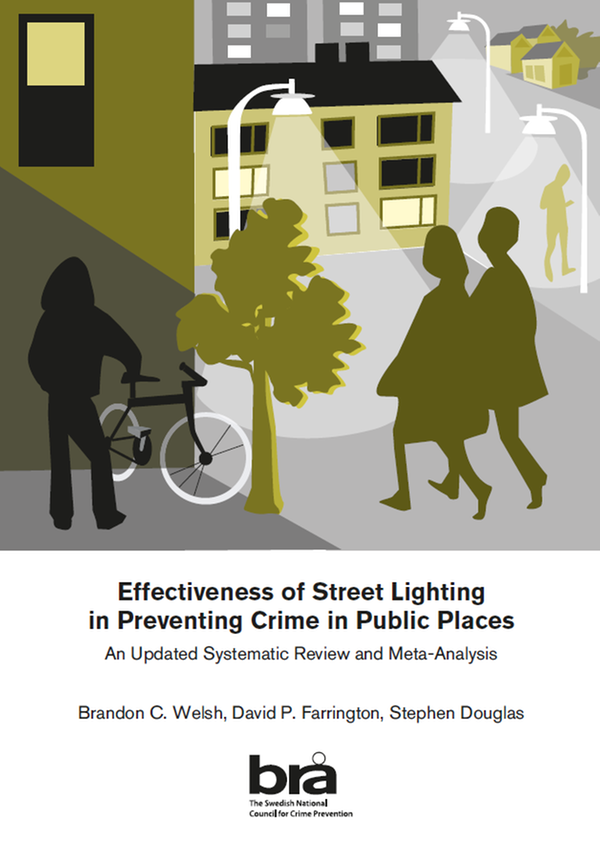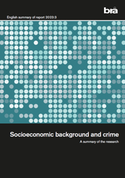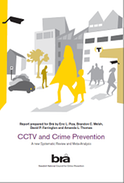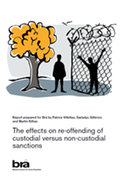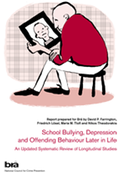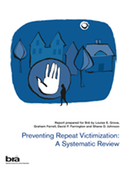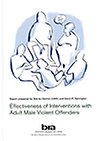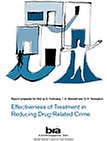Effectiveness of Street Lighting in Preventing Crime in Public Places
An Updated Systematic Review and Meta-Analysis
Does improved lighting reduce levels of crime? What do the strongest evaluations tell us? These questions are answered in this systematic review, which examines the strongest available research to date.
Darkness in built up areas can contribute to feelings of personal insecurity, and can produce favorable conditions for vandalism and theft, including bicycle thefts and thefts from vehicles. The crime preventive effects of improved lighting in public places are therefore often discussed, and measures to improve lighting are often implemented as a means of combating crime.
The Swedish National Council for Crime Prevention (Brå) has commissioned distinguished researchers, led by Professor David Farrington at Cambridge University, to conduct a series of international reviews of the research published.
In 2007, Brå published a systematic review on the effects of improved lighting. The publication was based on the 13 studies available at the time whose methodology was sufficiently rigorous to meet the inclusion criteria for a systematic review. This report comprises an updated review, which now includes a total of 21 studies. The study follows the rigorous methodological requirements of a systematic review and statistical meta-analysis. Even though important questions remain unanswered, the study provides a vital and far-reaching overview of the available evidence on the preventive effects of improved street lighting.
Brandon C. Welsh is Professor of Criminology and Criminal Justice at Northeastern University (USA).
David P. Farrington is Emeritus Professor of Psychological Criminology at Cambridge University (UK).
Stephen Douglas is Doctoral Student at Northeastern University (USA).
Crime prevention work
Street lighting continues to be an effective intervention in preventing crime in public places
In pooling the effects of 17 studies that could be included in the meta-analysis, it was found that street lighting led to a significant 14% decrease in crime in experimental areas compared with comparable control areas. While not every study was effective in preventing crime, desirable effects of street lighting interventions were greater in studies that measured both night and day crimes than in studies that only measured night crimes. This translates to a significant 18% decrease in crime for night/day studies compared to a non significant 3% decrease in crime for night only studies. These findings suggest that a theory of street lighting focusing on its role in increasing community pride and informal social control may be more plausible than a theory focusing on increased surveillance or deterrence.
It was also possible to use meta-analytic techniques to investigate the effects of street lighting interventions on violent and property crimes, the two main types of crimes that were measured in the studies. Street lighting interventions were followed by a significant decrease in property crimes (12%), but not in violent crimes. Importantly, this effect on property crimes closely approximates the overall effect of street lighting interventions on total crime (14%), suggesting that the overall effect on crime may be largely a function of street lighting's impact on proprety crimes. Cost-benefit analyses of improved lighting suggested that the benefits (in terms of fewer crimes) outweighed the costs, but similar analyses of part-night lighting also suggested that this had benefits.
Many of the recommendations that we made 14 years ago (see Farrington and Walsh 2007) for research on the effects of street lighting on crime are still needed today. For example, future evaluation studies should include several experimental areas and several adjacent and comparable non-adjacent control areas. Adjacent areas are needed to investigate crime displacement and diffusion of crime prevention benefits. In addition, a long time series of crimes should be studied to investigate pre-existing crime trends, as well as the extent to which any effects of street lighting interventions persist or wear off over time. It would also be highly desirable for researchers to carry out more cost-benefit analyses of street lighting interventions. This would allow for a number of key policy questions to be addressed, such as: Do the monetary benefits to society from decreased crime rates outweigh the monetary costs of implementing and maintaining street lighting projects? To whom do the monetary benefits (or costs) accrue?
Compared to years past, it would seem that an even stronger case can be made today for street lighting interventions to be part of national and local crime prevention policy. A larger body of high quality evaluation research, implemented in a range of high-crime public places, some evidence of value for money, and the enduring impact on crime, especially property crimes, all point to the policy significance of street lighting interventions.
Previous reports in the series
1. Closed-Circuit Television Surveillance and Crime Prevention
Welsh, B. C. & Farrington, D. P. (2007)
2. Improved Street Lighting and Crime Prevention
Welsh, B. C. & Farrington, D. P. (2007)
3. Effectiveness of Neighbourhood Watch In Reducing Crime
Bennett, T. H., Holloway, K. R. & Farrington, D. P. (2008)
4. Effects of Early Family/Parent Training Programs on Antisocial Behavior & Delinquency
Piquero, A. R., Farrington, D. P., Welsh, B. C., Tremblay, R., & Jennings, W. G. (2008)
5. The Influence of Mentoring on Reoffending
Jolliffe, D. & Farrington, D. P. (2008)
6. Effectiveness of Treatment in Reducing Drug-Related Crime
Holloway, K. R., Bennett, T. H. & Farrington, D. P. (2008)
7. Effectiveness of Programmes to Reduce School Bullying
Ttofi, M. M., Farrington, D. P. & Baldry, A. C. (2008)
8. Effectiveness of Interventions with Adult Male Violent Offenders
Jolliffe, D. & Farrington, D. P. (2009)
9. Effectiveness of Programs Designed to Improve Self-Control
Piquero, A. R., Jennings, W. G. & Farrington, D. P. (2009)
10. Treatment Effectiveness in Secure Corrections of Serious (Violent or Chronic) Juvenile Offenders
Morales, A. A., Garrido, V. & Sánchez-Meca, S. (2010)
11. Effectiveness of Public Area Surveillance for Crime Prevention: Security Guards, Place Managers and Defensible Space
Welsh, B. C., Farrington, D. P. & O'Dell, S.J. (2010)
12. Preventing Repeat Victimization
Grove, L. E., Graham Farrell, G., Farrington, D.P & Johnson, S.D. (2012)
13. School Bullying, Depression and Offending Behaviour Later in Life
Farrington, D. P., Lösel, F., Ttofi, M. M. & Theodorakis, N. (2012)
14. The effects on re-offending of custodial versus non-custodial sanctions
Villettaz, P., Gilliéron, G. & Killias, M. (2014)
15. CCTV and Crime Prevention
Piza, E. L., Welsh, B. C., Farrington, D. P. & Thomas, A.L. (2018)
Publication facts
Author: Brandon C. Welsh, David P. Farrington and Stephen Douglas
© Brottsförebyggande rådet 2024
urn:nbn:se:bra-1019


